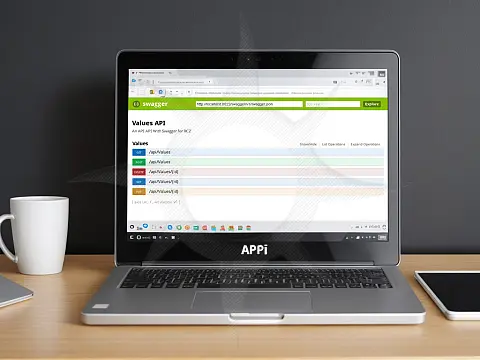Data Validation and Error Handling in REST APIs using C#Learn how to implement data validation in C# REST API with a practical guide and best practices to ensure the accuracy and security of data.
This article is part of a series of articles. Please use the links below to navigate between the articles.
- A Beginner's Guide to Building a REST API in C#
- Using Swagger to Document and Test Your C# REST API
- How to Add Authentication and Authorisation to C# REST APIs
- Error Handling and Exception Management in C# REST APIs
- Data Validation and Error Handling in REST APIs using C#
- Versioning Your C# REST API: Best Practices and Approaches
- Caching Strategies for Improved Efficiency in C# REST APIs
- How to Implement Rate Limiting in Your C# REST API

Data validation is essential to developing a secure and dependable C# REST API. By implementing data validation, you can ensure that the data submitted to your API is accurate, consistent, and matches the relevant requirements. In this post, we will look at different strategies and best practices for implementing data validation in your C# REST API, which will help you improve the correctness and security of your data.
Understand the importance of data validation in a REST API
Data validation is important for maintaining the integrity and security of a REST API. If not validated correctly, the API is subject to many security threats, such as inject needs to blacks and data leaks. Data validation aids in the maintenance of data integrity and accuracy, preventing errors and inconsistencies in API answers. Understanding the significance of data validation allows developers to create effective validation procedures and protect their API from potential vulnerabilities.
Use Input Validation Techniques to Prevent Malicious Attacks
Input validation is an essential step in protecting your C# REST API from harmful attacks. By validating user input, you can verify that your API accepts only safe and expected data. This aids in the prevention of typical security vulnerabilities such as SQL injection and cross-site scripting (XSS).
Techniques such as whitelisting, blacklisting, and regular expressions can be used to implement input validation. Whitelisting entails defining a set of permitted characters or patterns and accepting only input that meets these criteria. In contrast, blacklisting is specifying a set of forbidden characters or patterns and rejecting any input that contains them. Regular expressions are a handy tool for constructing complicated pattern-based validation rules.
All user input must be thoroughly validated, including query parameters, request headers, and request contents. Consider providing input validation at various API layers, including the API gateway, application, and database. This defence-in-depth method ensures that if one validation layer fails, further layers are in place to catch any malicious input.
Implement Server-Side Validation to Ensure Data Integrity
In a C# REST API, server-side validation is essential for assuring the integrity of your data. While client-side validation can improve the user experience by discovering mistakes before sending data to the server, it should never be used as the only validation.
Server-side validation is required because malevolent users can bypass or alter client-side validation. By adding server-side validation, you can ensure that all data received by your API is thoroughly reviewed for accuracy and conformity to your validation rules.
You can utilise several approaches and libraries available in C# to achieve server-side validation. One common way is to establish validation rules directly in your API models using data annotations and model validation characteristics. You can use these properties to develop constraints like necessary fields, maximum lengths, and regular expression patterns.
How To Use Model Validation in C# REST API
Use model validation to validate data at the input model level. ASP.NET Core provides built-in support for model validation using data annotations and the ModelState object. You can annotate your model classes with attributes like [Required], [StringLength], or custom validation attributes. For example:
public class MyModel
{
[Required]
public string Name { get; set; }
[StringLength(50)]
public string Description { get; set; }
} In your API controller, check `ModelState.IsValid` to ensure that the input data is valid:
[HttpPost]
public IActionResult Create([FromBody] MyModel model)
{
if (!ModelState.IsValid)
{
// Handle validation errors
return BadRequest(ModelState);
}
// Process the valid data
// ...
} How To Use Data Annotations and Fluent Validation
Consider using libraries like FluentValidation , which allow you to construct validation rules more flexibly and expressively. You may keep your models clean by defining validation criteria in a separate class. Here's an example of how to use FluentValidation:
public class MyModelValidator : AbstractValidator<MyModel>
{
public MyModelValidator()
{
RuleFor(x => x.Name).NotEmpty().WithMessage("Name is required.");
RuleFor(x => x.Description).MaximumLength(50).WithMessage("Description is too long.");
}
} In addition, you can use custom validation logic in your API controllers to conduct more sophisticated validation tasks. Examples include checking database constraints, executing business rule validations, and validating data against external sources.
Remember to properly manage validation problems by returning appropriate error messages and HTTP status codes to the client. This enables consumers to receive meaningful feedback and ensures that they understand why their data was rejected.
Utilise Data Annotations and Validation Attributes in C#
Using data annotations and validation characteristics is a standard way to implement data validation in a C# REST API. You can define validation rules directly in your API models using these characteristics. You can, for example, use the [Required] attribute to indicate that a particular field is required or the [MaxLength] attribute to establish a maximum length for a string field.
Using these data annotations and validation properties, you may enforce limitations such as mandatory fields, maximum lengths, and regular expression patterns. This ensures that the data received by your API follows your validation requirements.
To perform more sophisticated validation duties, you can develop new validation attributes in addition to the built-in attributes. Custom attributes can validate business rules, check database constraints, and validate data against other sources.
How To Create Custom Data Validation Rules in ASP.NET APIs
You can construct custom data validation attributes in ASP.NET Core to do server-side validation on your API model properties. You can design and apply your own validation criteria to model properties using these custom attributes. In a C# API, here's how to construct and utilise a custom data validation attribute.
First, create a custom validation attribute class.
using System;
using System.ComponentModel.DataAnnotations;
public class CustomValidationAttribute : ValidationAttribute
{
public string AllowedValues { get; }
public CustomValidationAttribute(string allowedValues)
{
AllowedValues = allowedValues;
}
protected override ValidationResult IsValid(object value, ValidationContext validationContext)
{
if (value == null)
{
return ValidationResult.Success;
}
string[] allowedValuesArray = AllowedValues.Split(',');
string valueToValidate = value.ToString();
if (Array.Exists(allowedValuesArray, av => av.Trim() == valueToValidate))
{
return ValidationResult.Success;
}
return new ValidationResult($"The field {validationContext.DisplayName} must be one of the allowed values: {AllowedValues}");
}
} In this example, we've generated a custom validation attribute called CustomValidationAttribute. It takes a comma-separated list of permissible values. It determines whether the value of the property is one of them.
To use the custom attribute in your model:
public class MyModel
{
[CustomValidation("Value1,Value2,Value3")]
public string MyProperty { get; set; }
} And we can check if the model is valid in the same way as before:
[ApiController]
[Route("api/[controller]")]
public class MyController : ControllerBase
{
[HttpPost]
public IActionResult Post([FromBody] MyModel model)
{
if (!ModelState.IsValid)
{
return BadRequest(ModelState);
}
// Handle the valid model
return Ok("Model is valid.");
}
} Following these steps, you've created a custom data validation attribute that determines if a property's value falls within a predefined range of acceptable values. Suppose the value does not fit the criteria. In that case, the validation property adds an error to the ModelState, which you may subsequently manage in your API controller.
Handle Validation Errors Gracefully and Provide Meaningful Error Messages
When implementing data validation in your C # REST API, it is important to handle validation errors gently and provide useful error messages to users. This will improve the user experience and provide clear feedback on any validation difficulties.
To manage validation problems, employ exception handling mechanisms to catch validation issues during API request processing. When a validation fault is identified, you can return an HTTP status code, such as 400 Bad Request, coupled with an error message that outlines the problem.
The error message should be clear and straightforward, describing the violated validation rule and how the user can resolve the problem. If a needed field is missing, the error message could say, "The 'name' field is required."
By delivering informative error messages, you may help consumers understand why their request was unsuccessful and guide them towards addressing the validation issue. This can enhance the user experience and reduce frustration.
Regularly examining and updating your validation rules is important to responding to new requirements and potential vulnerabilities. As your API matures, you may need to add new validation rules or modify current ones. Reviewing and updating your validation rules regularly helps ensure your data's correctness and integrity.






